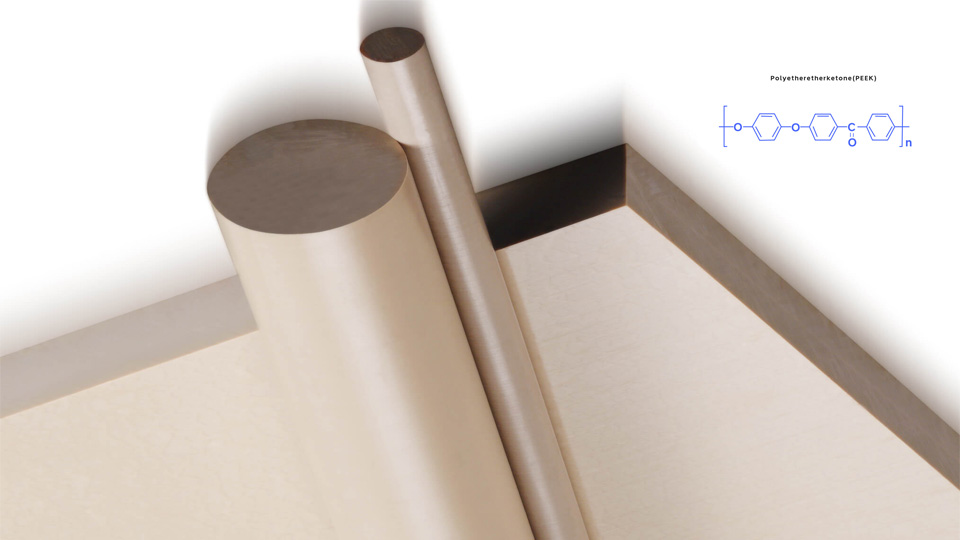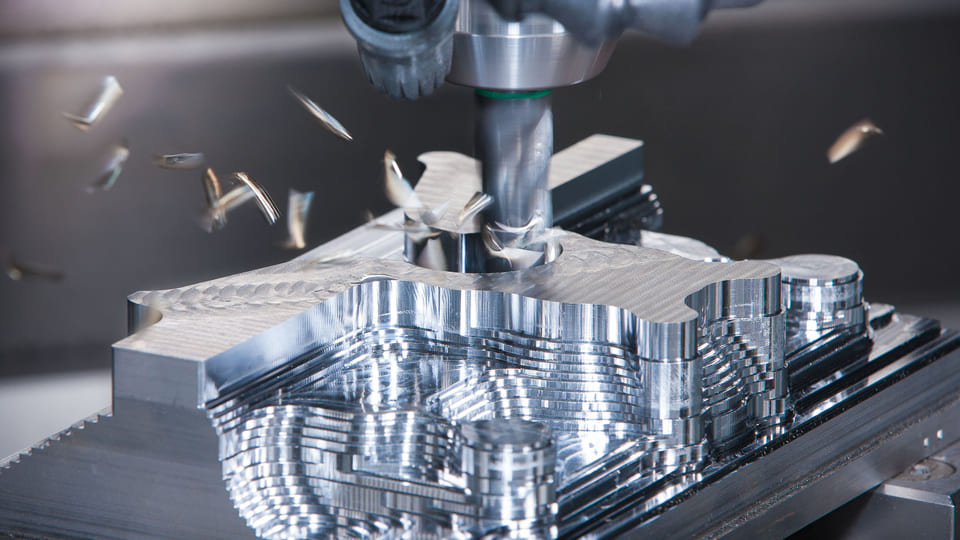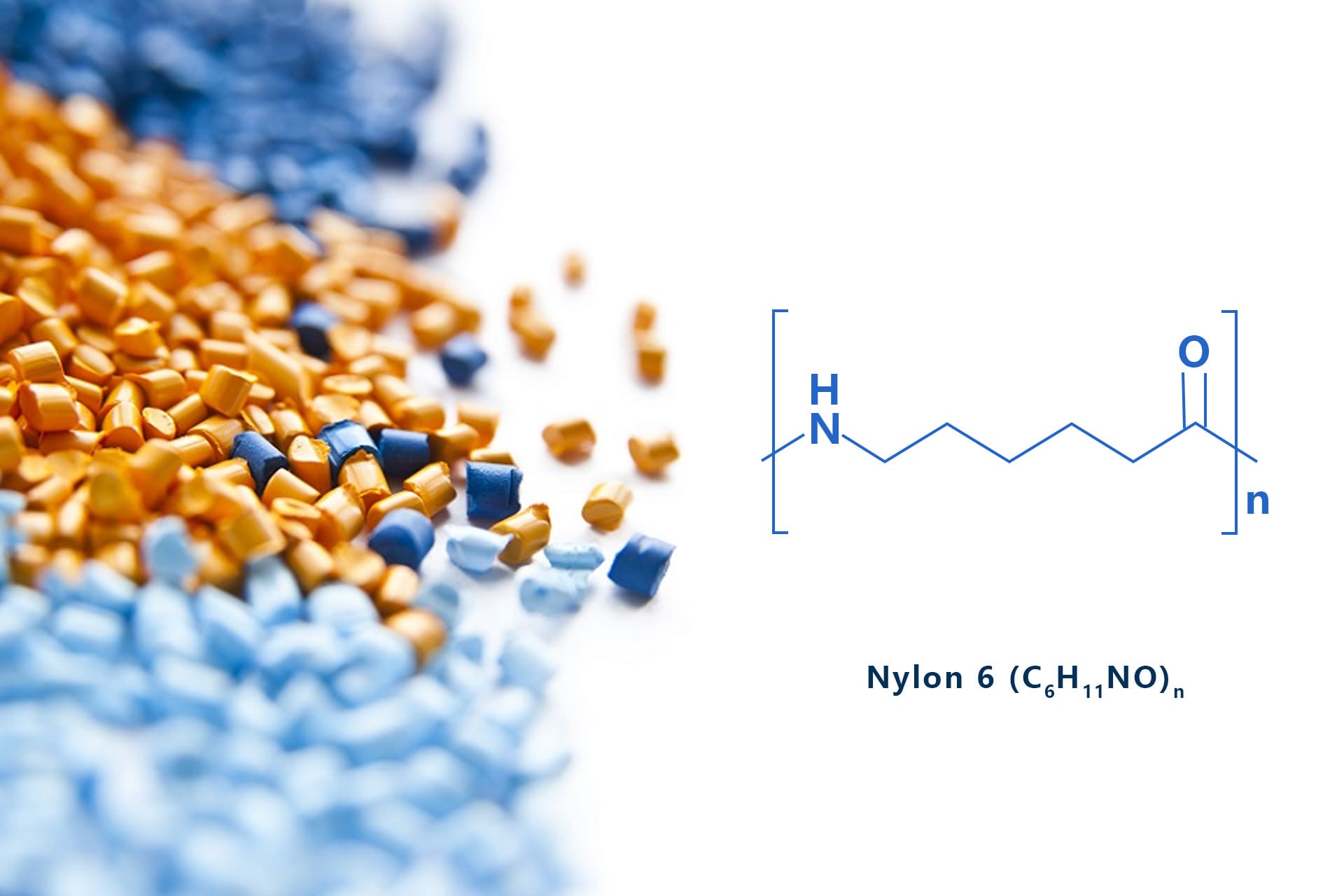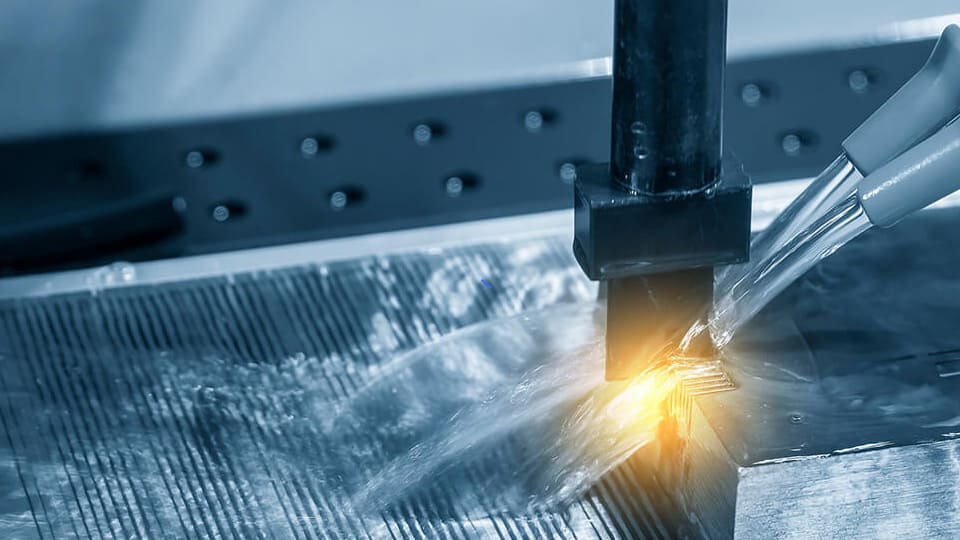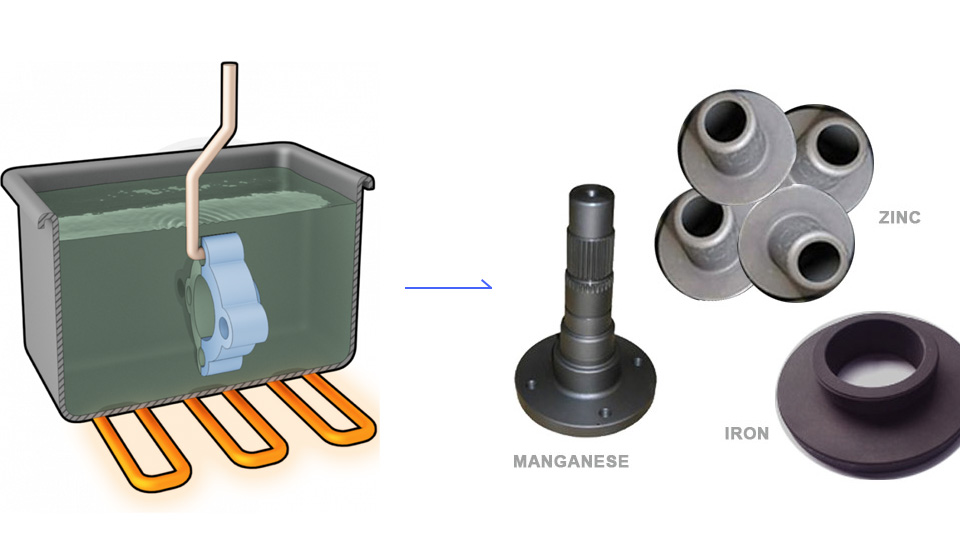Polyetheretherketone (PEEK), developed by Imperial Chemical Industries (ICI) in 1978, is a semi-crystalline, linear aromatic polymer composed of alternating ether bonds, aromatic rings, and carbonyl groups. This thermoplastic, ultra-high-performance engineering plastic boasts a molecular structure with numerous benzene rings, where the relatively flexible C-O bonds are effectively protected by the steric hindrance of two benzene rings. Additionally, oxygen atoms and carbonyl groups form a p-π conjugation effect with the benzene rings. These structural features endow PEEK with exceptional properties.
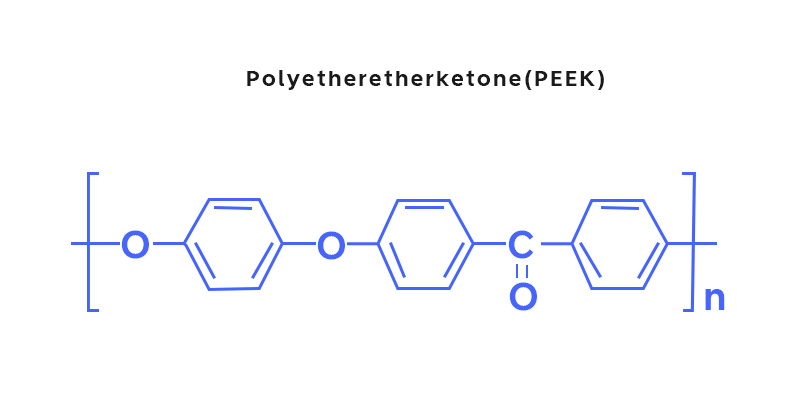
Properties of PEEK
PEEK is an aromatic, crystalline thermoplastic polymer with a glass transition temperature of 143°C and a melting point of 334°C. It offers high mechanical strength, excellent heat resistance, impact resistance, flame retardancy, resistance to acids and alkalis, hydrolysis resistance, wear resistance, fatigue resistance, radiation resistance, and outstanding electrical properties. PEEK has the best radiation resistance among all plastics, a high oxygen index, low smoke emission during combustion, and is non-toxic. In many cases, it can effectively replace metals, alloys, ceramics, and other materials.
Mechanical Properties
PEEK has excellent creep resistance and fatigue resistance. Glass-fiber-reinforced and carbon-fiber-reinforced PEEK grades offer higher strength and modulus compared to unreinforced grades, though strength and modulus decrease noticeably above the glass transition temperature. Among crystalline polymers, PEEK has a high melting point and glass transition temperature, maintaining significant strength and modulus even above 200°C. Additionally, PEEK demonstrates low friction coefficients and wear rates across a wide temperature range and can withstand repeated high loads.
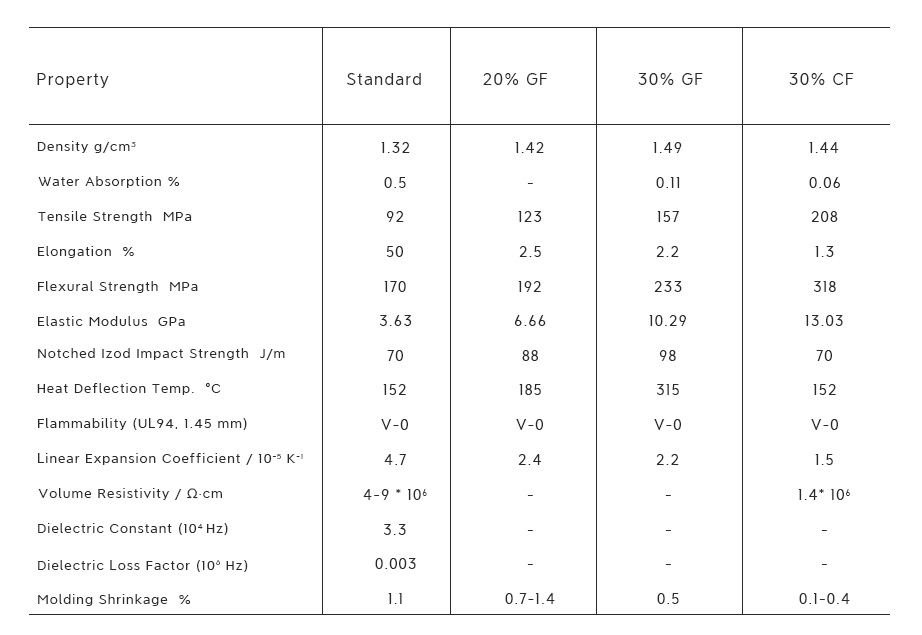
Heat Resistance
PEEK boasts outstanding heat resistance, with a long-term use temperature of up to 240°C. Thermogravimetric analysis shows no weight loss at 400°C, 2.5% weight loss at 500°C, and 59% weight loss at 600°C.
Both unreinforced and glass- or carbon-fiber-reinforced PEEK maintain tensile strength after 1,000 hours of thermal aging. For PEEK-coated wires, heat aging resistance data indicates a service life exceeding 6,000 hours at 220°C.
This makes PEEK a top choice for applications in thermoforming, oilfield development, and aerospace environments requiring high-temperature performance.
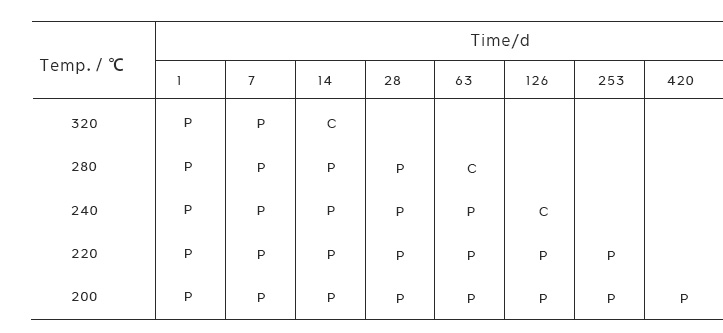
Hot Water and Steam Resistance
One of PEEK’s standout features is its resistance to hot water and steam. After 800 hours of immersion in 80°C hot water, its tensile strength and elongation at break remain virtually unchanged. In 200°C steam, PEEK maintains its tensile strength and appearance, allowing long-term use in steam environments. Among all engineering plastics, PEEK has the highest steam resistance.
Electrical Properties
PEEK resin has a volume resistivity of 10^16 Ω·cm and low dielectric loss tangent at high frequencies. It retains excellent electrical insulation properties under harsh conditions, including high temperatures, high pressure, and high humidity.
Chemical Resistance
PEEK is resistant to nearly all chemicals except concentrated sulfuric acid and maintains excellent chemical stability at elevated temperatures. Compared to polycarbonate, modified polyphenylene ether, and polysulfone, PEEK’s chemical resistance under stress is exceptional
However, when PEEK’s crystallinity is low, immersion in certain chemicals (e.g., acetone) may cause stress cracking. This can be mitigated by annealing (e.g., at 200°C) to increase crystallinity and stress-crack resistance.
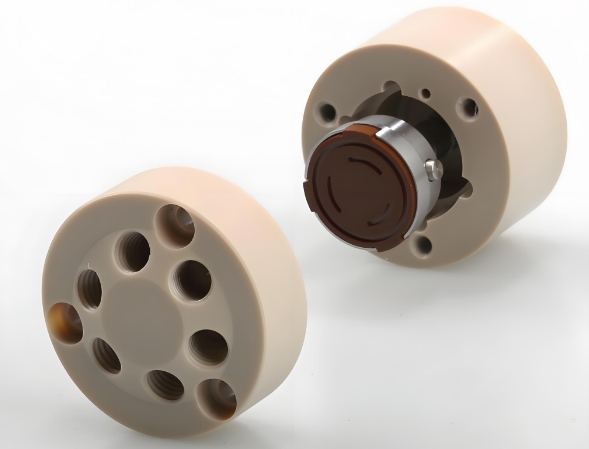
Flame Retardancy
PEEK is self-extinguishing, with 0.8–1.6 mm thick samples achieving a UL94 V-0 rating without added flame retardants. It produces minimal smoke during forced combustion and emits no toxic gases.
Radiation Resistance
PEEK has exceptional radiation resistance, particularly against gamma rays, outperforming all other engineering plastics. It begins to embrittle at gamma-ray absorption doses of (1.0–1.2) × 10^7 Gy, while beta-ray doses of (0.1–12) × 10^6 Gy have no effect.
8. Self-Lubrication
PEEK offers excellent self-lubricating properties, making it ideal for applications requiring low friction and high wear resistance. Carbon-fiber-, graphite-, or PTFE-modified PEEK grades exhibit superior wear resistance.
Biocompatibility
PEEK is non-toxic, safe, and non-allergenic, with excellent physiological compatibility. Implant-grade PEEK has undergone rigorous biocompatibility testing per ISO 10993 standards at independent testing facilities, confirming its suitability for medical applications with no adverse effects.
PEEK Processing
PEEK’s melt viscosity becomes less temperature-dependent above 380°C but is highly sensitive to shear stress and shear rate. Increasing pressure during processing effectively enhances melt flowability.
Injection Molding
Due to PEEK’s high melting point and melt viscosity compared to general engineering plastics, injection molding requires higher barrel temperatures, typically controlled at 350–400°C. Materials must be pre-dried, typically at 150°C for 3 hours.
As a crystalline polymer, PEEK requires sufficient crystallization during molding to achieve optimal properties. At mold temperatures of 150–160°C, injection-molded PEEK parts are opaque with high crystallinity, though the surface may be transparent with lower crystallinity. At 180°C mold temperatures, parts achieve higher crystallinity. If high mold temperatures are not feasible, post-processing (e.g., 200°C for 1 hour or 300°C for 2 minutes) can enhance crystallinity. Standard injection molding equipment is suitable, but for large, thin-walled, or complex parts, screws with high length-to-diameter ratios and short compression zones are recommended.
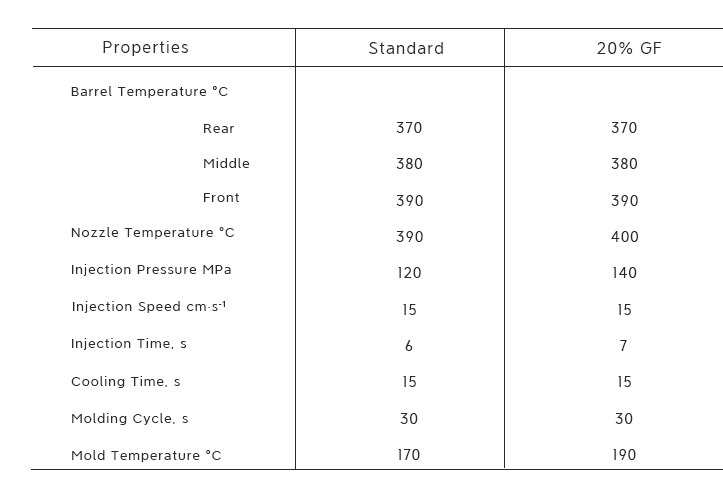
Extrusion Molding
PEEK can be extruded to produce films, monofilaments, rods, tubes, and coated wires. Unstretched PEEK films have low crystallinity, but stretching and heat treatment significantly improve their melting point and mechanical strength, positioning them between PET and Kapton polyimide films as Class C insulation materials. PEEK films are transparent, with light transmittance around 85%, as produced by Japan’s Sumitomo Chemical.
For large parts (diameter >6.3 cm), differences in crystallization rates between the core and surface can cause internal stresses and cracking, which can be mitigated by high-temperature annealing (e.g., 300°C for several hours).
Lamination and Electrostatic Coating
Using PEEK as a matrix resin with glass or carbon fibers (or a hybrid), high-performance composite laminates can be produced via lamination. These maintain high bending modulus retention below 300°C.
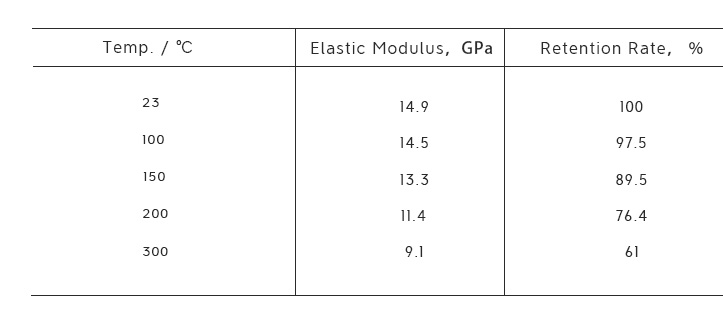
PEEK reinforced with 70% unidirectional carbon fiber offers exceptional strength and toughness, with tensile strength up to 1,540 MPa and tensile modulus up to 130 GPa at 23°C. Since no organic solvent fully dissolves PEEK, solution coating is not feasible, but electrostatic powder coating produces PEEK-coated metal products with excellent insulation, corrosion resistance, heat resistance, and water resistance.
Secondary Processing
PEEK supports secondary processing via machining, ultrasonic welding, electroplating, and sputtering. It can be bonded using epoxy, polyurethane, or silicone adhesives. Surface pretreatment with chromic acid enhances bonding strength.
Applications of PEEK
PEEK is widely used in electronics, machinery, aerospace, automotive, and other fields.
Electronics
Applications include wire coatings, magnetic wire coatings, high-temperature terminal blocks, motor insulation materials, and integrated circuit wafer supports.
Machinery
PEEK is used for gears, bearings, connectors, piston rings, centrifuge components, sensor parts, conveyor chains, and cleaning fixtures.
Aerospace
PEEK is used in aircraft components such as radar parts and radomes, which offer excellent weather resistance, and engine parts that operate above 200°C. Carbon- or glass-fiber-reinforced PEEK is used for door handles, cabin panels, control sticks, and helicopter tail wings.
ICI’s APC-2, a PEEK-based composite, is ten times tougher than standard epoxy composites, replacing epoxy in space station components, aircraft wings, and other large structures. Glass-fiber-reinforced PEEK is injection-molded into rocket igniter tubes, replacing metals, reducing costs, and performing reliably in harsh launch environments.
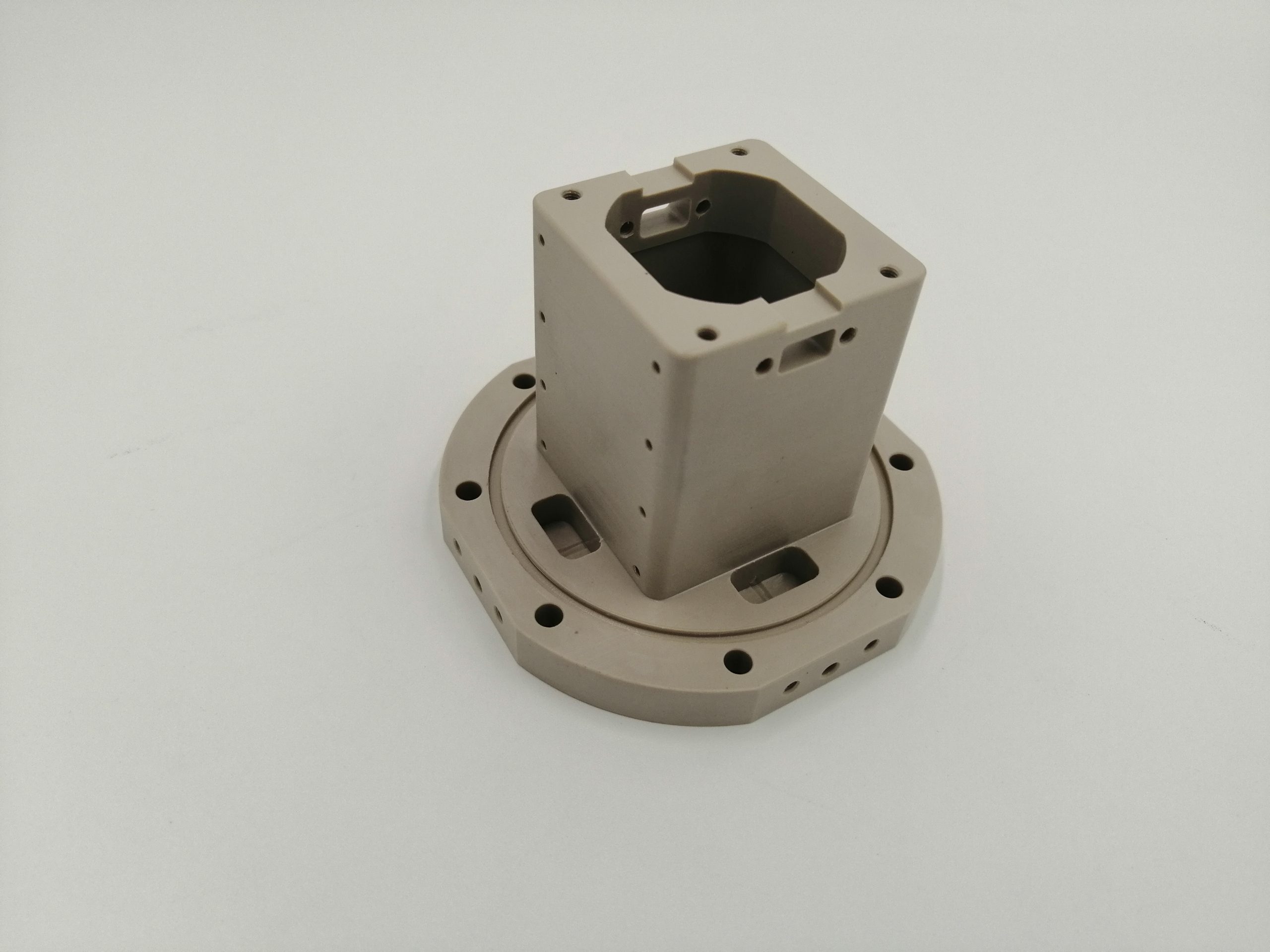
Medical Devices
PEEK’s non-toxicity, light weight, corrosion resistance, and biocompatibility make it a promising material for biomedical prosthetics. Applications include PEEK intervertebral fusion devices, artificial bone joints (e.g., hip and knee), cranial and jaw defect repairs, spinal/lumbar repairs, dental restorations, and other bone defect repairs. Ongoing research has led to PEEK composites used in dental implants, restorations, orthodontics, and oral maxillofacial surgery.
PEEK withstands 3,000 cycles of autoclaving at 134°C, making it ideal for surgical and dental equipment requiring high sterilization standards and repeated use, thanks to its creep and hydrolysis resistance.
Energy
PEEK meets the high-performance demands of nuclear industry components. Its radiation resistance, stable chemical structure, excellent electrical properties at high temperatures, mechanical strength, chemical corrosion resistance, low moisture absorption, and hydrolysis resistance make it ideal for nuclear power applications.
PEEK is also used in high-temperature, high-pressure, and chemically corrosive environments, such as hydrogen and petroleum gas compressor rings and mesh valve plates in large petrochemical production lines, expanding oil and gas exploration capabilities.
Modified and New PEEK Grades
The most significant modified PEEK grades are glass-fiber- and carbon-fiber-reinforced versions, which enhance mechanical strength, modulus, and heat resistance. Below are recently developed PEEK grades and alloys.
Conductive PEEK
To meet the needs of semiconductor, LCD glass substrate, and integrated circuit wafer support manufacturing, which require high toughness, dimensional stability, light weight, and antistatic properties at high temperatures, Japan’s Mitsui Toatsu Chemical developed the conductive PEEK grade KNE5010. This reduces PEEK’s surface resistivity from 10^16 Ω to 10^8–10^10 Ω while retaining its excellent properties.
High-Strength PEEK
In 1994, Mitsui Toatsu Chemical introduced the high-strength PEEK grade PKU-CF30, a composite of PEEK and specially treated carbon fibers. It offers exceptional mechanical strength and modulus, with a tensile strength of 284 MPa (slightly below aluminum alloys) and a specific strength of 206 MPa (far surpassing aluminum alloys).
Injection-molded automotive turbine impellers made from PKU-CF30 are half the weight of aluminum alloy equivalents, with high strength, heat resistance, and fatigue resistance. This cost-effective, high-performance material is used in Nissan’s main turbine vehicles.
PEEK Alloys
PEEK’s high cost and relatively low glass transition temperature (143°C) lead to rapid strength and modulus loss above this temperature. Improvements are achieved through glass fiber reinforcement or alloying. Blending PEEK with non-crystalline, high-glass-transition-temperature resins like polysulfone (PSF), polyetherimide (PEI), or polyethersulfone (PES) produces alloys with higher glass transition temperatures. For example, a 50/50 (by mass) PEEK/PEI blend achieves a glass transition temperature of 180°C, 37°C higher than PEEK alone. While PEEK’s absolute crystallinity and crystallization rate decrease, crystallinity is retained, and PEI’s solvent resistance improves.
Blending PEEK with polyphenylene sulfide (PPS) enhances melt flow, increases the glass transition temperature, and reduces costs.
Different polyaryletherketone varieties, such as PEEK and PEK, can be blended to form polymer alloys, adjusting melting points and glass transition temperatures by varying ether and ketone ratios. PEEK/liquid crystal polymer (LCP) alloys reduce strength and modulus loss above the glass transition temperature and improve flow length and processability compared to pure PEEK.
About SogaWorks
SogaWorks is an all-in-one online platform for custom mechanical parts, connecting over 1,000 top-tier factories to serve startups and major companies. We offer flexible manufacturing solutions for rapid prototyping, small-volume testing, and large-scale production with services like CNC machining, 3D printing, urethane casting, and injection molding. Surface finishes include anodizing, sand blasting and phosphating. With our AI-powered quoting engine, SogaWorks can deliver quotes in 5 seconds, match the best capacity, and track every step. This cuts delivery times and boosts product quality.
